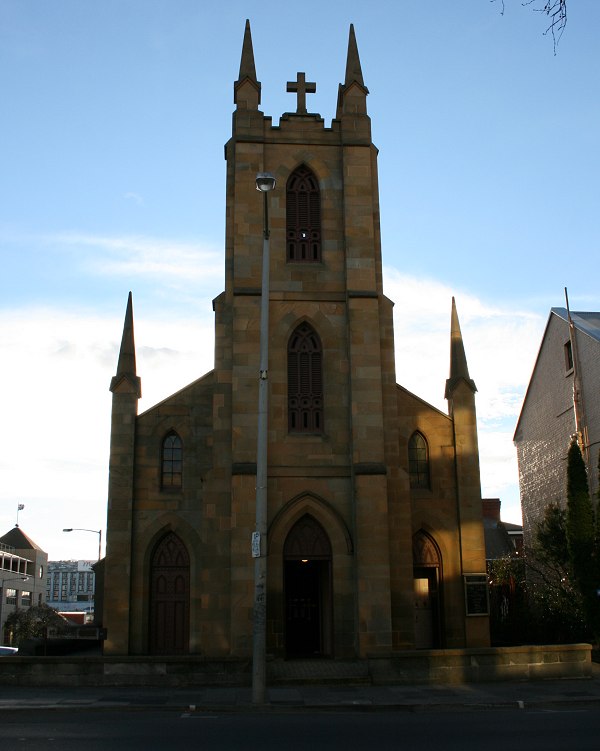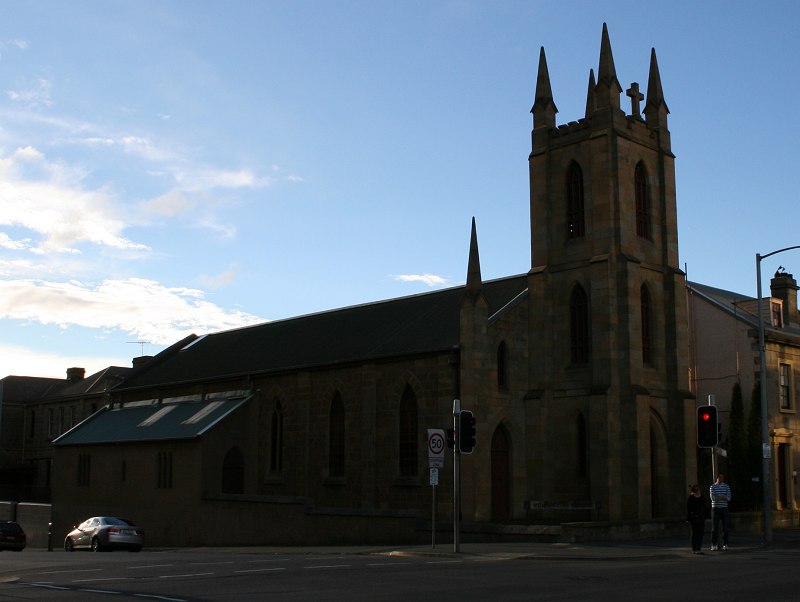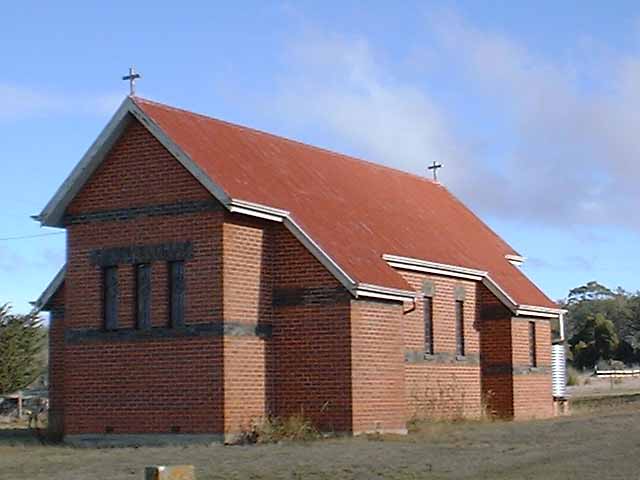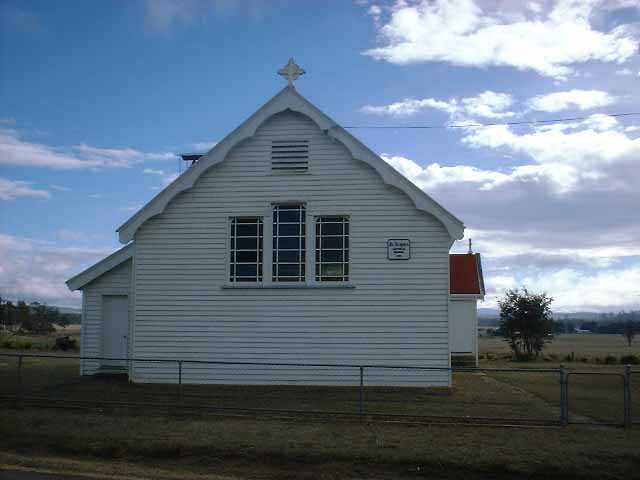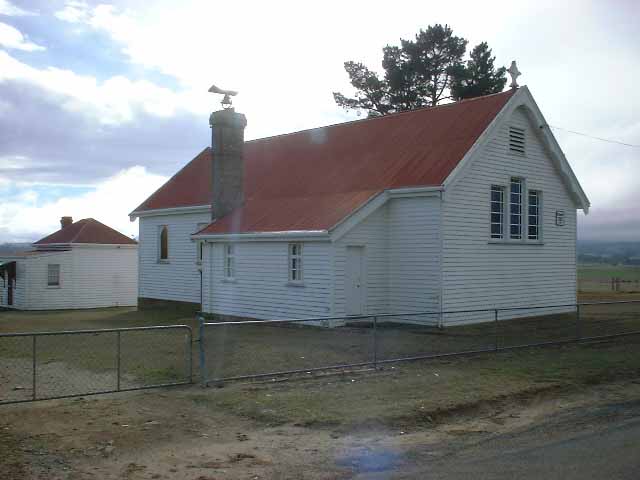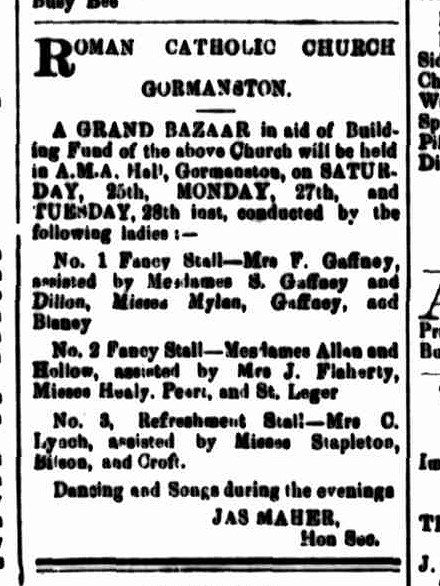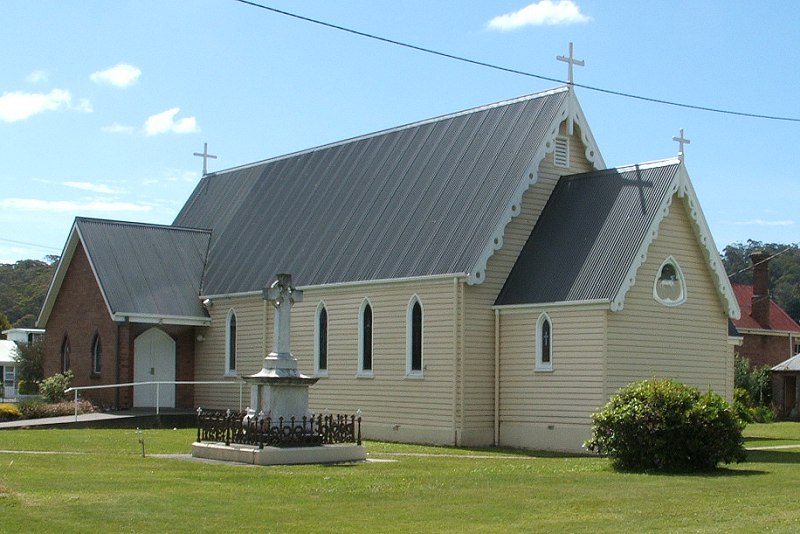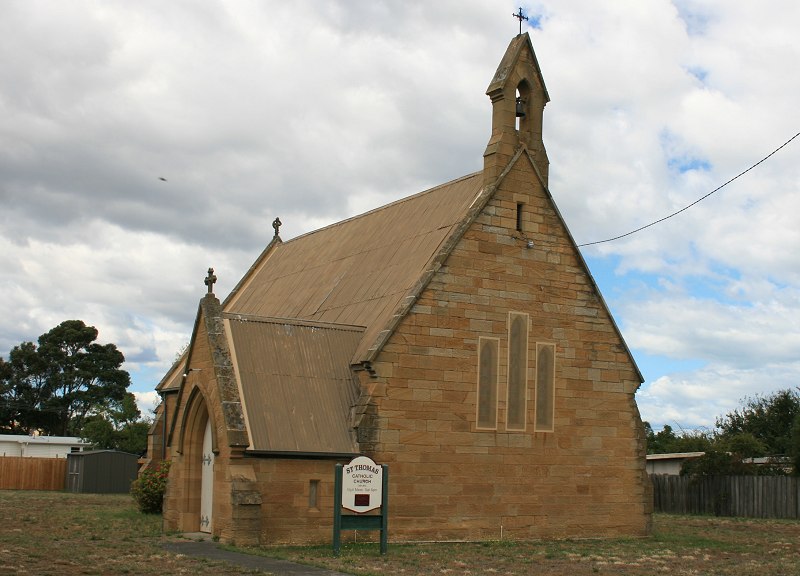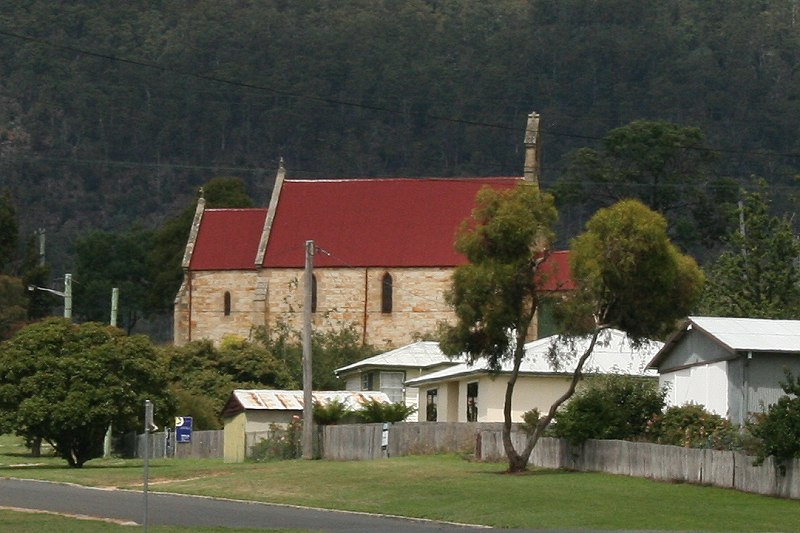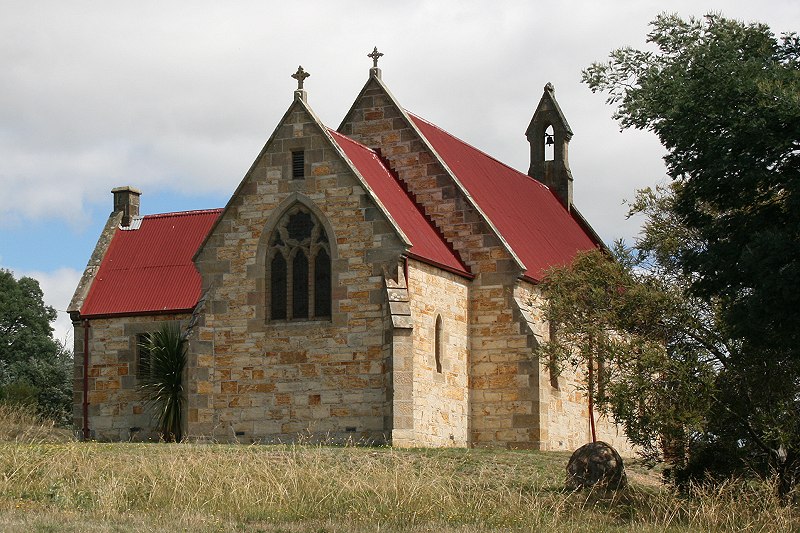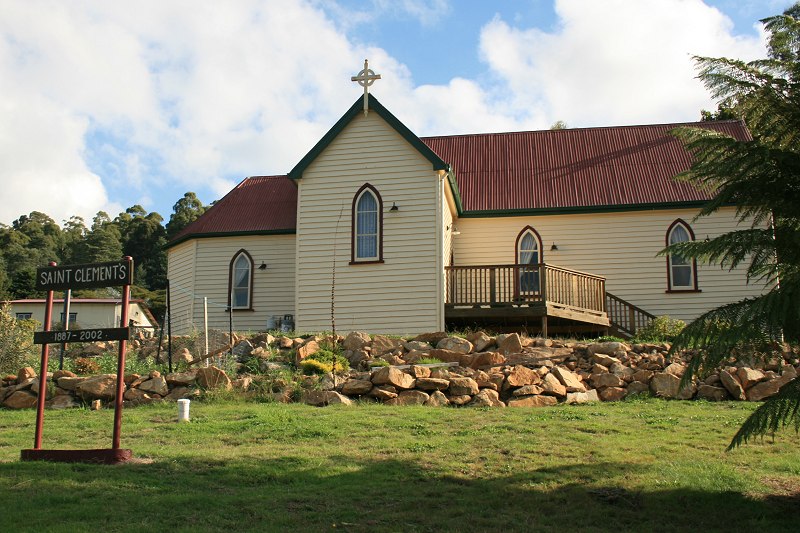PILLINGER CATHOLIC CHURCH
No more favorable day than yesterday could have been chosen for the opening of the new Catholic Church at Kelly Basin dedicated to the Sacred Heart. Delightful weather conditions prevailed, and these, following the wintry weather of the past few weeks, proved an additional inducement, apart from the ceremony to many, amongst them some who had arrived by the train from Zeehan to take advantage of the excursion by the U.S.S. Company’s fast-steaming Pilot, which was running to the Basin. Punctually at 9.30 the vessel steamed away with nearly 80 excursionists on board, and after a run of about two hours Kelly Basin was reached, all proceeding immediately to the new church, where High Mass was celebrated by the Rev, Father O’Regan. His Lordship, Bishop Delaney preached, an eloquent and impressive sermon. After the collection had been taken up His Lordship announced that the total reached close upon £70, and thanked the congregation for the liberal manner in which they had responded. He also thanked the Strahan Choir, who had come from Strahan to take part in the service for their splendid assistance. This body, under the conductorship of Mrs Heinze, with Herr Holm as organist, lent considerable impressiveness to the service by their excellent rendering of Farmer’s “Twelfth Mass,” and the duet, Rossini’s “Tantum Ergo,” was nicely rendered by Mrs Heinze and Mr W. J. Kelly.
The church is built of wood, and of Gothic design of the early English period, and occupies a central and commanding position overlooking the township. The main elevation of the nave, entrance to which is gained by large double doors and opening outwards, has a bold gable surmounted with an ornamental cross, the filling of this gable being formed with panels and supported under the collar tie with cut brackets. The character of the interior, the walls and ceiling of which are lined with beaded board, is plain, with bold mouldings, The dado around the nave is of V pointed narrow hardwood boards, mounted at the top with bold mould, and the bottom with neat skirting. The windows throughout are Gothic leaded, fitted with fanlights, and in keeping with the style of architecture, the amber-tinted cathedral glass giving a soft, yet ample light. The cornice is bold and has neatly cut frieze divided into panels. Splendid ventilation has been provided by means of the fanlights and also by the frieze cornice from under the eaves. The painting and decorations, both outside and in, have been carried out in an artistic manner.
The building was designed and supervised by Messrs Austen and Keogh (As.R.V.I.A.), architects, of Strahan and Queenstown, and stands as another proof of the ability of those gentlemen. Mr F. H. Luckins of Kelly Basin, was the contractor, and he has fulfilled his part to the letter.
Zeehan & Dundas Herald, 5 November 1900
